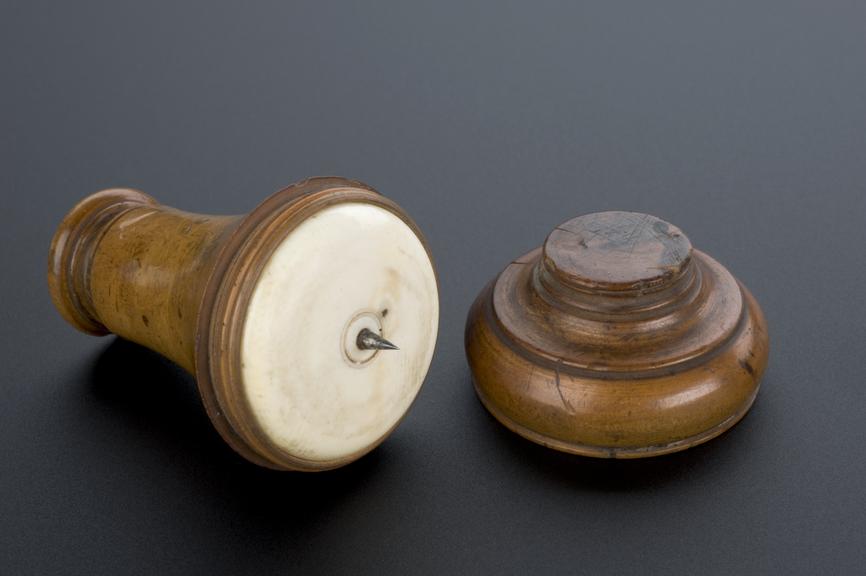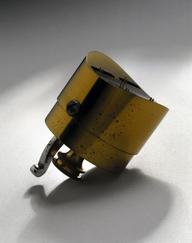


Vaccinator, metal spike in ivory surround within boxwood container, 18th century(?)
The history of smallpox vaccination does not necessarily start with Edward Jenner’s (1749-1823) introduction of a cowpox vaccine in 1798. A procedure known as ‘variolation’ was devised in China about a thousand years ago and then spread westwards to Turkey and a number of other Islamic countries. In variolation, material from smallpox pustules was given to an uninfected person by blowing dried smallpox scabs into their nose in the expectation that they would contract a milder form of the disease and so be protected from more dangerous infections. This method was brought to England by Lady Mary Wortley Montague (1689-1762) in 1720. It was made illegal in the United Kingdom in 1840 as it could spread the disease further while also transmitting other diseases such as syphilis.
Details
- Category:
- Public Health & Hygiene
- Collection:
- Sir Henry Wellcome's Museum Collection
- Object Number:
- A615199
- Measurements:
-
overall: 67 mm 42 mm, .3kg
- type:
- vaccinator




